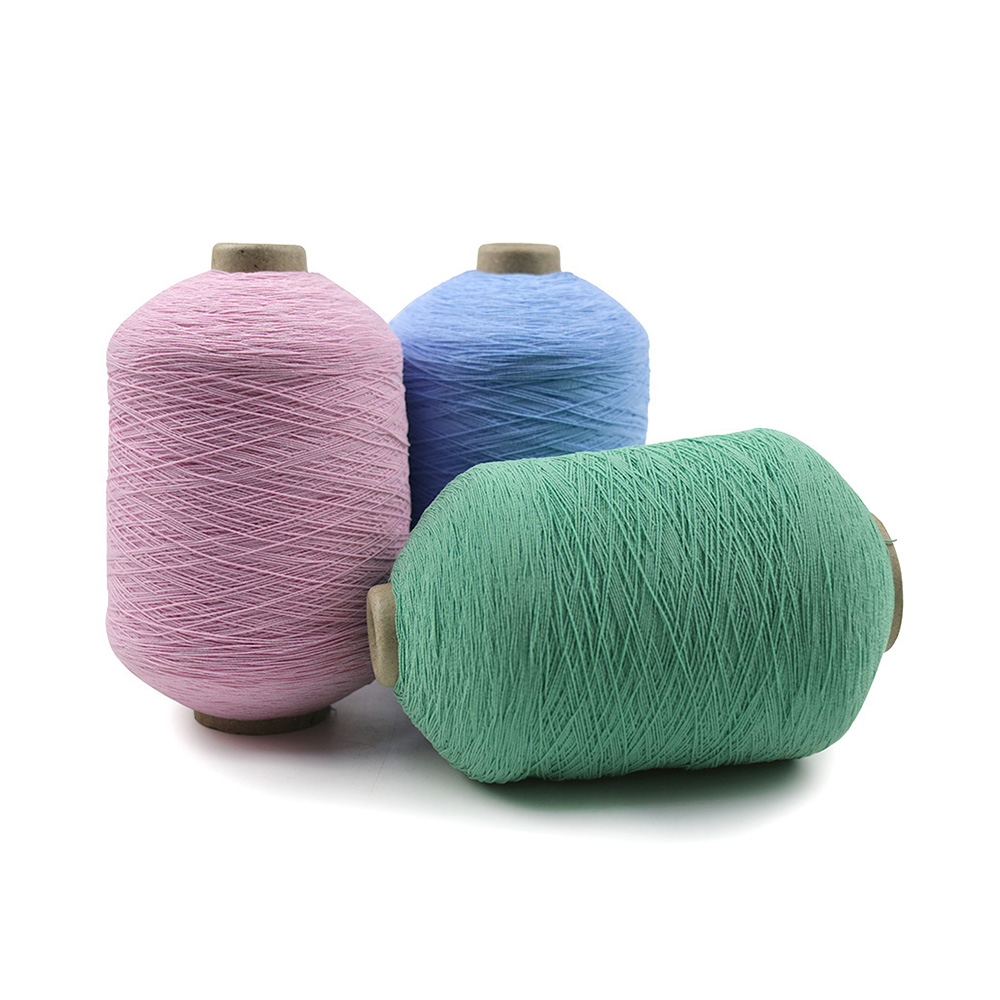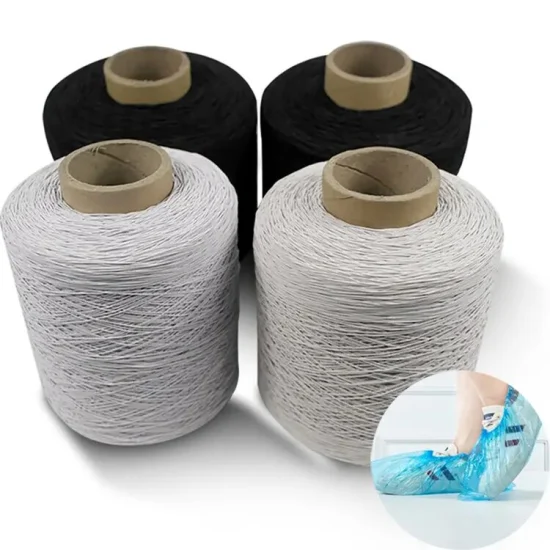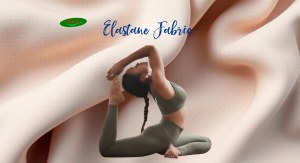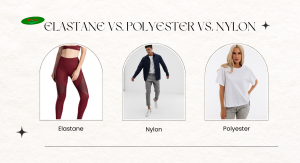Rubber covered yarn, also known as covered rubber thread or elastic yarn, is a versatile and essential component in various industries. This innovative material combines the elasticity of rubber with the strength and durability of textile fibers, resulting in a product that offers both flexibility and resilience. In this comprehensive guide, we’ll explore the world of rubber covered yarn, its manufacturing process, applications, and the key players in the industry.
The Fundamentals of Rubber Covered Yarn
Rubber covered yarn is a specialized textile product that consists of a rubber core wrapped in a textile fiber sheath. This unique construction allows for the creation of elastic materials that can stretch and recover their original shape, making them ideal for a wide range of applications.
Composition and Structure Rubber Covered Yarn
The composition of rubber covered yarn typically involves two main components: the rubber core and the outer covering. The rubber core is usually made from natural or synthetic rubber, providing the elastic properties of the yarn. The outer covering can be composed of various textile fibers, including polyester, nylon, or silk, depending on the desired characteristics and end-use of the product.
This combination of materials results in a yarn that possesses both the stretch and recovery properties of rubber and the strength and appearance of traditional textiles. The outer covering not only enhances the yarn’s durability but also allows for a wider range of colors and textures, making it suitable for diverse applications in fashion, medical, and industrial sectors.
Manufacturing Process
The production of rubber covered yarn involves a complex process that requires precision and expertise. The manufacturing process typically follows these steps:
- Rubber core preparation: The rubber is first extruded into a thin, continuous filament.
- Textile fiber preparation: The covering fibers are spun and prepared for the wrapping process.
- Covering process: The rubber core is fed through specialized machinery where it is wrapped with the textile fibers. This can be done using various techniques, such as single covering, double covering, or air covering.
- Heat setting: The covered yarn is then subjected to heat treatment to set the covering and ensure proper adhesion between the rubber core and the textile fibers.
- Quality control: The finished yarn undergoes rigorous testing to ensure it meets the required specifications for elasticity, strength, and appearance.
Types of Rubber Covered Yarn
There are several types of rubber covered yarn available in the market, each with its own unique properties and applications:
- Polyester-covered rubber thread: This type offers excellent strength and durability, making it suitable for applications that require frequent washing and wear.
- Nylon-covered rubber thread: Known for its high elasticity and soft hand feel, nylon-covered rubber yarn is often used in intimate apparel and sportswear.
- Silk-covered rubber thread: This premium option provides a luxurious appearance and is commonly used in high-end fashion and lingerie.
The choice of covering material and rubber core composition can be tailored to meet specific requirements for stretch, recovery, and overall performance in various applications.
Applications of Rubber Covered Yarn in Protective Gear

One of the most significant areas where rubber covered yarn has made a substantial impact is in the production of protective gear. From medical equipment to sports accessories and shield protectors, this versatile material has become an integral component in ensuring safety and comfort across various industries.
Medical Protective Gear
In the medical field, rubber covered yarn plays a crucial role in the manufacturing of essential protective equipment. Its unique properties make it an ideal material for creating comfortable yet effective barriers against potential health hazards.
Some common applications in medical protective gear include:
- Surgical masks and respirators: The elastic properties of rubber covered yarn allow for a snug fit around the face, ensuring proper sealing and filtration.
- Medical gowns and scrubs: Elastic bands and cuffs made from rubber covered yarn provide a secure fit while allowing freedom of movement for healthcare professionals.
- Disposable gloves: The elasticity of the yarn helps in creating a tight seal around the wrist, preventing contamination and ensuring a proper fit for various hand sizes.
The use of rubber covered yarn in medical protective gear not only enhances the effectiveness of these products but also contributes to the comfort of healthcare workers who may need to wear such equipment for extended periods.
Sports Protective Equipment
In the world of sports, safety is paramount, and rubber covered yarn has become an essential component in the design and manufacture of various protective gear items. Its ability to provide both flexibility and support makes it an excellent choice for sports equipment that needs to accommodate a wide range of movements while offering protection.
Some examples of sports protective gear that utilize rubber covered yarn include:
- Compression garments: These form-fitting clothes use rubber covered yarn to provide targeted support to muscles, improve blood circulation, and reduce the risk of injury.
- Athletic tape and wraps: Elastic bandages and tapes made with rubber covered yarn offer support to joints and muscles during physical activities.
- Protective padding: The elastic properties of rubber covered yarn allow for the creation of flexible yet protective padding in items such as helmets, shin guards, and elbow pads.
The use of rubber covered yarn in sports protective equipment has revolutionized the industry, allowing for the development of gear that not only protects athletes but also enhances their performance by providing the right balance of support and flexibility.
Shield Protectors and Safety Equipment
Beyond medical and sports applications, rubber covered yarn has found its way into various other safety and protective equipment. Its versatility makes it an excellent choice for creating flexible yet durable protective barriers in a wide range of industries.
Some applications in this category include:
- Industrial safety gear: Rubber covered yarn is used in the production of protective clothing for workers in hazardous environments, such as chemical-resistant suits and heat-resistant gloves.
- Automotive safety equipment: Seat belts and airbags often incorporate rubber covered yarn to provide the necessary elasticity and strength for effective protection during accidents.
- Personal protective equipment (PPE): Various forms of PPE, such as protective eyewear straps and respirator bands, utilize rubber covered yarn to ensure a secure and comfortable fit.
The incorporation of rubber covered yarn in these applications has significantly improved the effectiveness and comfort of safety equipment across multiple industries, contributing to increased worker safety and compliance with safety regulations.
Innovations and Advancements in Rubber Covered Yarn Technology

As the demand for high-performance textiles continues to grow, manufacturers and researchers are constantly pushing the boundaries of rubber covered yarn technology. These innovations aim to enhance the material’s properties, expand its applications, and improve sustainability in production processes.
Smart Textiles and Wearable Technology
The integration of rubber covered yarn with smart textile technologies has opened up new possibilities in the realm of wearable devices and interactive fabrics. This fusion of traditional textile manufacturing with cutting-edge electronics has led to the development of innovative products that can monitor, respond, and adapt to various stimuli.
Some exciting developments in this area include:
- Conductive rubber covered yarn: By incorporating conductive materials into the yarn structure, manufacturers have created textiles that can transmit electrical signals, enabling the integration of sensors and other electronic components directly into fabrics.
- Temperature-responsive elastic yarn: Advanced rubber compounds that change their elasticity in response to temperature variations have been developed, allowing for the creation of smart clothing that adapts to environmental conditions.
- Pressure-sensitive fabrics: Rubber covered yarn with embedded pressure sensors can be used to create textiles that respond to touch or pressure, opening up possibilities for applications in healthcare monitoring and interactive clothing.
These advancements in smart textiles are paving the way for a new generation of wearable technology that seamlessly integrates with our daily lives, from health monitoring garments to interactive sportswear that can provide real-time feedback on performance.
Eco-friendly and Sustainable Production
With growing concerns about environmental sustainability, the rubber covered yarn industry has been making significant strides in developing more eco-friendly production methods and materials. These efforts aim to reduce the environmental impact of manufacturing processes and create products that are biodegradable or easily recyclable.
Some notable developments in sustainable rubber covered yarn production include:
- Bio-based elastomers: Researchers are exploring the use of renewable resources to create biodegradable rubber compounds that can replace traditional petroleum-based elastomers.
- Recycled fiber coverings: Many manufacturers are now incorporating recycled polyester and nylon fibers into their yarn coverings, reducing the demand for virgin materials and minimizing waste.
- Water-based adhesives: The development of eco-friendly, water-based adhesives for bonding the rubber core to the textile covering has helped reduce the use of harmful solvents in the manufacturing process.
These sustainability initiatives not only help reduce the environmental footprint of rubber covered yarn production but also cater to the growing consumer demand for eco-friendly textile products.
High-Performance Specialty Yarns
As the applications for rubber covered yarn continue to expand, manufacturers are developing specialized variants that cater to specific industry needs. These high-performance yarns often combine advanced materials and innovative production techniques to achieve superior properties.
Some examples of specialty rubber covered yarns include:
- Flame-resistant elastic yarn: By incorporating flame-retardant fibers or treatments, manufacturers have created elastic yarns suitable for use in protective clothing for firefighters and other high-risk professions.
- Ultra-fine denier yarns: Advanced spinning techniques have allowed for the production of extremely fine rubber covered yarns, enabling the creation of lightweight, barely visible elastic fabrics for use in high-end fashion and intimate apparel.
- High-strength composite yarns: Combining rubber cores with high-performance fibers such as aramid or carbon fiber has resulted in elastic yarns with exceptional strength-to-weight ratios, suitable for use in aerospace and automotive applications.
These specialty yarns demonstrate the versatility and adaptability of rubber covered yarn technology, showcasing its potential to meet the evolving needs of various industries and push the boundaries of textile innovation.
The Global Market and Future Outlook for Rubber Covered Yarn
The rubber covered yarn industry has experienced significant growth in recent years, driven by increasing demand from various end-use sectors and ongoing technological advancements. Understanding the current market dynamics and future trends is crucial for stakeholders in this industry to make informed decisions and capitalize on emerging opportunities.
Market Size and Growth Projections
The global rubber covered yarn market has been steadily expanding, with projections indicating continued growth in the coming years. Factors contributing to this growth include:
- Rising demand for elastic textiles in the fashion and apparel industry
- Increasing adoption of advanced protective gear in various sectors
- Growing awareness of the benefits of compression garments in sports and medical applications
Market research reports suggest that the rubber covered yarn market is expected to grow at a compound annual growth rate (CAGR) of around 5-7% over the next five years. This growth is likely to be driven by both established markets in North America and Europe, as well as emerging economies in Asia-Pacific and Latin America.
Key Players and Competitive Landscape
The rubber covered yarn industry is characterized by a mix of large multinational corporations and specialized manufacturers. Some of the key players in the market include:
- V. S. Traders: A leading manufacturer and supplier of covered rubber thread and elastic yarn, known for their high-quality products and diverse range of offerings.
- Fulgar S.p.A.: An Italian company specializing in the production of synthetic fibers and covered elastic yarns for various applications.
- Ningbo Cixing Co., Ltd.: A Chinese manufacturer with a strong presence in the global rubber covered yarn market, offering a wide range of products for different industries.
These companies, along with other major players, are constantly innovating and expanding their product portfolios to maintain their competitive edge in the market. Collaborations with research institutions and strategic partnerships with end-users are becoming increasingly common as companies seek to develop new applications and improve existing products.
Emerging Trends and Future Opportunities
As the rubber covered yarn industry continues to evolve, several trends and opportunities are emerging that are likely to shape its future:
- Increasing demand for sustainable and eco-friendly products: Consumers and regulators are placing greater emphasis on environmental sustainability, driving the development of bio-based elastomers and recycled fiber coverings.
- Growing adoption in technical textiles: The use of rubber covered yarn in advanced technical textiles for automotive, aerospace, and industrial applications is expected to increase, opening up new market opportunities.
- Advancements in smart textiles: The integration of rubber covered yarn with electronic components and sensors is likely to drive innovation in wearable technology and interactive fabrics.
- Customization and on-demand production: Advances in manufacturing technologies may enable more flexible and customized production of rubber covered yarn, allowing for greater product differentiation and market responsiveness.
These trends highlight the dynamic nature of the rubber covered yarn industry and underscore the importance of continued innovation and adaptation to meet evolving market demands.
Conclusion
Rubber covered yarn has proven to be a versatile and indispensable material in numerous industries, from fashion and sportswear to medical and industrial applications. Its unique combination of elasticity, strength, and adaptability has made it a crucial component in the development of innovative textile products that enhance comfort, safety, and performance.
As we’ve explored in this comprehensive guide, the rubber covered yarn industry is characterized by ongoing technological advancements, a growing emphasis on sustainability, and an expanding range of applications. From the fundamental processes of manufacturing to cutting-edge innovations in smart textiles and high-performance specialty yarns, the field continues to evolve and push the boundaries of what’s possible in elastic textile materials.
Looking ahead, the future of rubber covered yarn appears bright, with projected market growth and emerging opportunities in various sectors. As manufacturers like V. S. Traders continue to innovate and expand their offerings, we can expect to see even more exciting developments in this dynamic industry. Whether it’s in the realm of protective gear, wearable technology, or eco-friendly textiles, rubber covered yarn will undoubtedly play a crucial role in shaping the future of textile innovation.
{done
Sourcing by TANITHREAD



